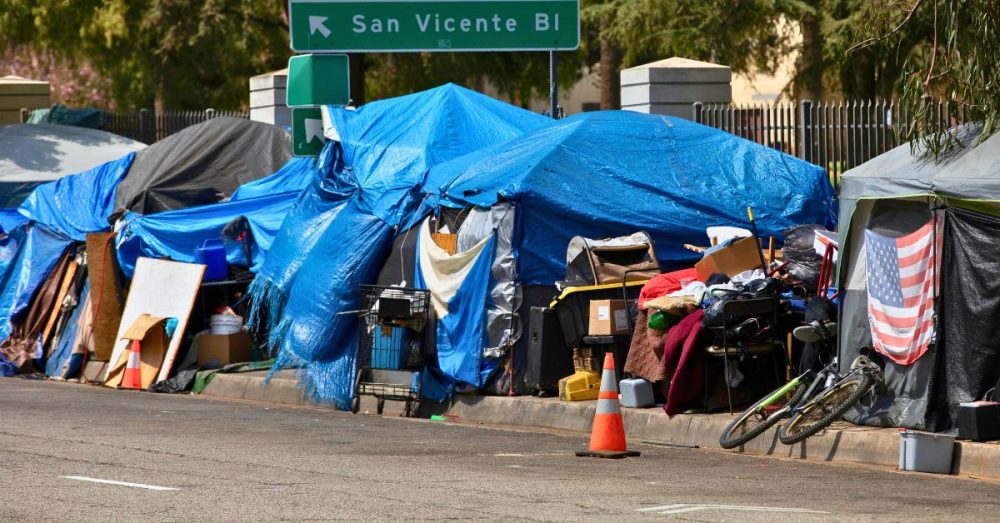The California nonprofit Invisible People is shedding some light on the point-in-time count, a tool the federal government requires continuums of care to use annually to measure homelessness in their communities.
Focused on “educating the public about homelessness through innovative storytelling, news, and advocacy,” Invisible People sorted through data to call into question whether California’s capital city has reduced homelessness by 29%.
“During previous point-in-time counts, Sacramento County had more homeless people than San Francisco. Now, they claim the number has dropped dramatically — from 9,000 people to around 6,600, which is roughly 29%. Furthermore, Sacramento County claims to have had a 41% drop in the number of street homeless or unsheltered homeless people and a 2% increase in homeless people in shelters,” reads an article published by the group.
However, the Sacramento Regional Coalition to End Homelessness, after reviewing the Sacramento Homelessness Response Dashboard, found an increase in criminalization enforcement in January — when the U.S. Department of Housing and Urban Development requires point-in-time counts to be completed — compared to other months.
“We wish that we could do [the point-in-time] count when homelessness is at its highest, which tends to be early fall,” said Maggie Thomas, a homeless services provider in Kansas City, Missouri, told ABC News. “But HUD says we do it in January, so we do it in January.”
According to Invisible People, Sacramento has joined a growing list of California cities that have banned encampments in some public spaces. One initiative, Measure O, requires the city to “identify and authorize” at least 605 individual shelter spaces. And while the city’s 1,100 shelter beds are usually full on any given night, many of the new spaces exist “only on paper,” according to the Invisible People report.
The Dallas Express reported in May that homelessness issues on the West Coast have been exacerbated by left-wing policies, according to researcher Michael Shellenberger, a former Democratic activist. The best-selling author whose book San Fransicko: Why Progressives Ruin Cities is a source of pride for the former journalist and in a February video he posted on X, Shellenberger is heavily critical of homelessness policies created by politicians in Democrat-controlled cities and the media narratives that advance them.
“By now, you’ve all heard the news that poverty causes homelessness,” he says in the video, referring to a New York Times story. “We’ve always known that most homelessness is a result, pure and simple, of poverty, the lack of a living wage, the lack of affordable housing, and the insidious impact of racism. You hear people saying things like, ‘You can’t just house people who have addiction problems.’ You can, and you must.”
The point-in-time count is a method that some Dallas officials have acknowledged is flawed. Dallas City Council Member Cara Mendelsohn (District 12) has often lamented how ineffective it is in capturing an accurate reflection of Dallas’ homelessness problem, including during a June meeting of the Housing and Homeless Solutions Committee when she said “not everyone is believing the progress” in reducing homelessness.
“I don’t think the point-in-time count was accurate. I believe homelessness has actually increased significantly. In the five years I’ve been on council, I have seen it in my own district. While I do believe we’re working on at least the solution in two places … I don’t think we’ve been successful in that, and we must be. It’s terrible how people are living. I don’t think your providers believe you have decreased homelessness, either. I’m skeptical of the data we’re seeing.”
Through point-in-time counts, volunteers across the country document the number of homeless people they generally find in encampments, in or near the woods, and in public spaces, such as sidewalks, parking lots, and parks. Those counts do not factor in the sheltered homeless population—for example, those staying with friends or relatives. Some people experiencing homelessness live in their cars, and the point-in-time counts often miss them.
On July 18, Mendelsohn referenced in a post about the Invisible People and how the point-in-time count is used nationally.
“Another city where people, including local non-profits, are questioning the accuracy of the annual #homeless Point in Time Count.”
Housing Forward CEO Sarah Kahn said that since the launch of R.E.A.L. Time Rehousing in 2021, overall homelessness has been reduced by 19% in Dallas and Collin counties, and unsheltered homelessness has dropped by 24%. More than 10,100 individuals have allegedly been housed over that period.
She reported in April that an estimated 3,718 people experienced homelessness every night in Dallas and Collin counties in January 2024. Since May 2023, 324 people in the same counties have reportedly found shelter through permanent supportive housing, and 2,405 individuals have been housed through diversion.
Rachel Wilson, a liaison with the U.S. Interagency Council on Homelessness embedded within the Dallas Office of Homeless Solutions, told the Housing & Homeless Solutions Committee in April that “Dallas is seen as a system that’s working very well” and that it’s “one of only 27 communities throughout the United States where homelessness is decreasing.”
But Council Member Jesse Moreno (District 2), who chairs the Housing & Homeless Solutions Committee, has recommended that a third party “verify” the data that Housing Forward has compiled on homelessness in Dallas.
Polling conducted by The Dallas Express shows that roughly 75% of Dallas residents think homelessness, vagrancy, and aggressive panhandling are “major” problems in the City. Respondents also appeared to generally support the one-stop-shop homeless services model used in San Antonio — Haven for Hope. It’s been credited with a 77% reduction in unsheltered homelessness in San Antonio’s downtown area.


